Marine Sport Dive Centre
Digital transformation of a 15-year-old dive centre platform
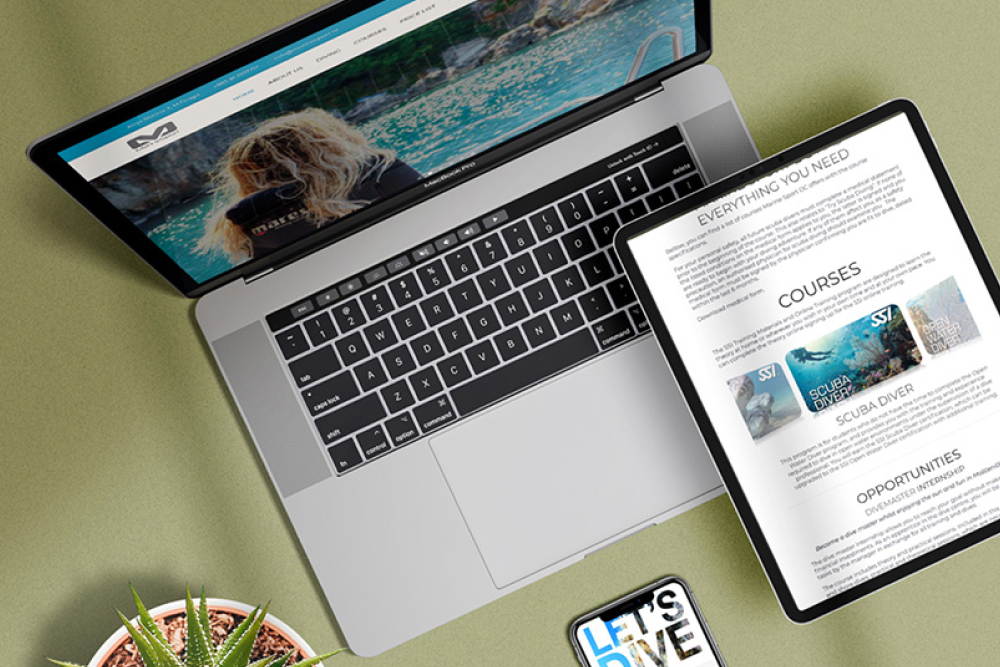
My role
I led an end-to-end process emphasising user research and the digital transformation of the organisation's platform. Worked closely with stakeholders to interpret requirements and research the current service.
The Challenge
How might we transform a long-standing website into a welcoming digital gateway that builds trust and excitement for every diver? What if the first online interaction could capture the warmth, professionalism, and community spirit that guests experience in person?
Setting the Scene
After 15 years online, the dive centre’s website presented a unique landscape: content and visual styles differed across language versions, and the user experience varied from page to page. This presented an exciting opportunity—to create a cohesive, modern platform that truly reflects the dive centre’s reputation and makes every visitor feel at home.
Research Process
Part I: Requirements & Discovery
To understand both the service and the organisation’s goals, I began by mapping out the entire ecosystem—how customers and the service interact across all channels. This included:
Stakeholder Interviews
- I engaged with key stakeholders to gain a detailed understanding of the company’s background, service portfolio, target audience, and digital presence. These conversations revealed a diverse client base, a reliance on recommendations and walk-ins, and a need for a cohesive digital strategy
User Interviews
- Conducted 60 interviews with users at the dive centre, capturing a wide spectrum of attitudes, needs, and expectations from both existing and prospective clients. This large sample ensured that the insights were robust and representative, forming a strong foundation for user personas, service blueprints, and journey maps.
Online Survey
- An additional survey gathered further insights into user motivations, experiences, and perceptions of both the physical and digital aspects of the dive centre.
Business Analysis & Observation:
- Research into local dive centres and direct observation of operations helped contextualise findings within the broader market.
Key Insights
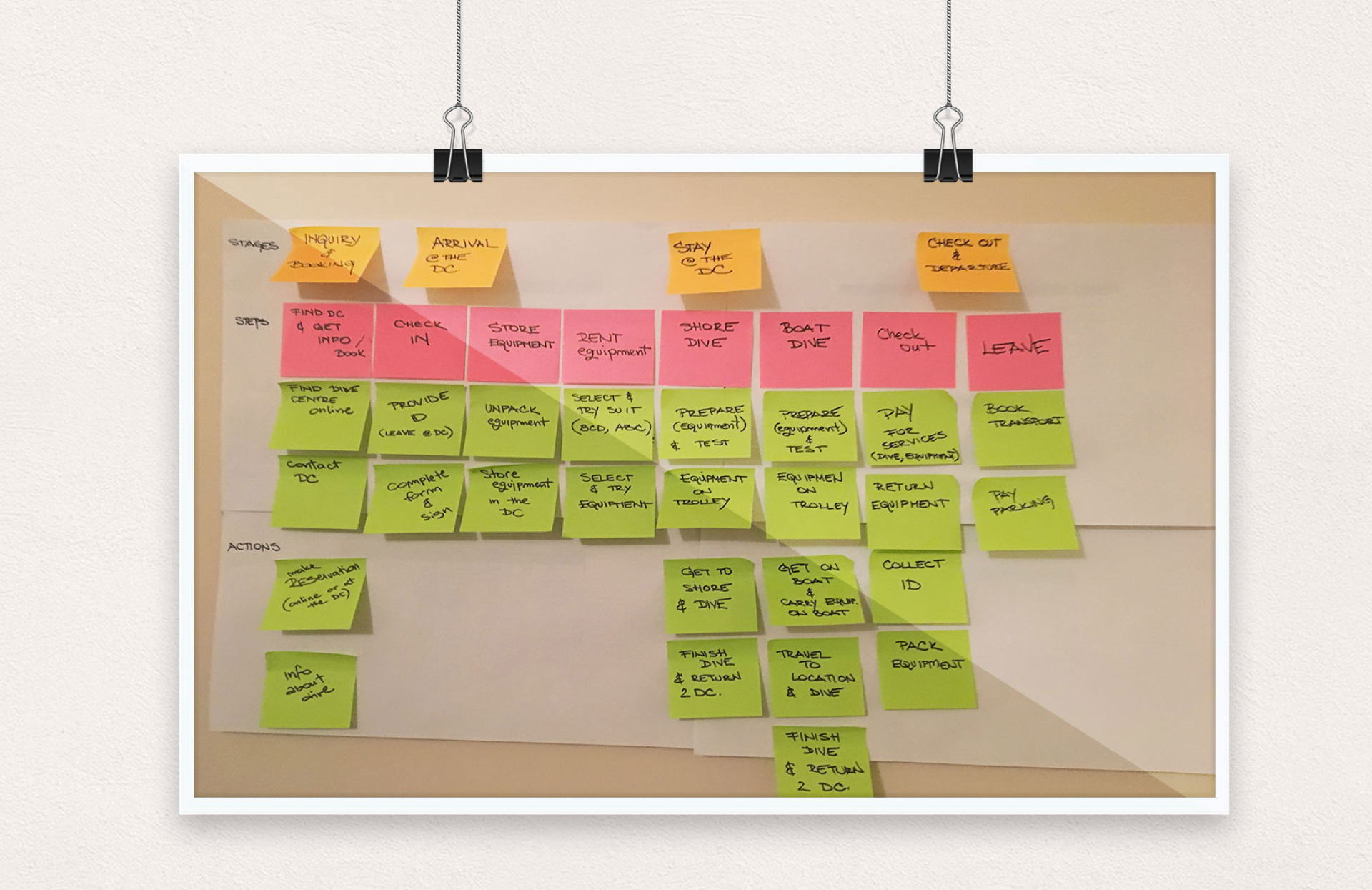
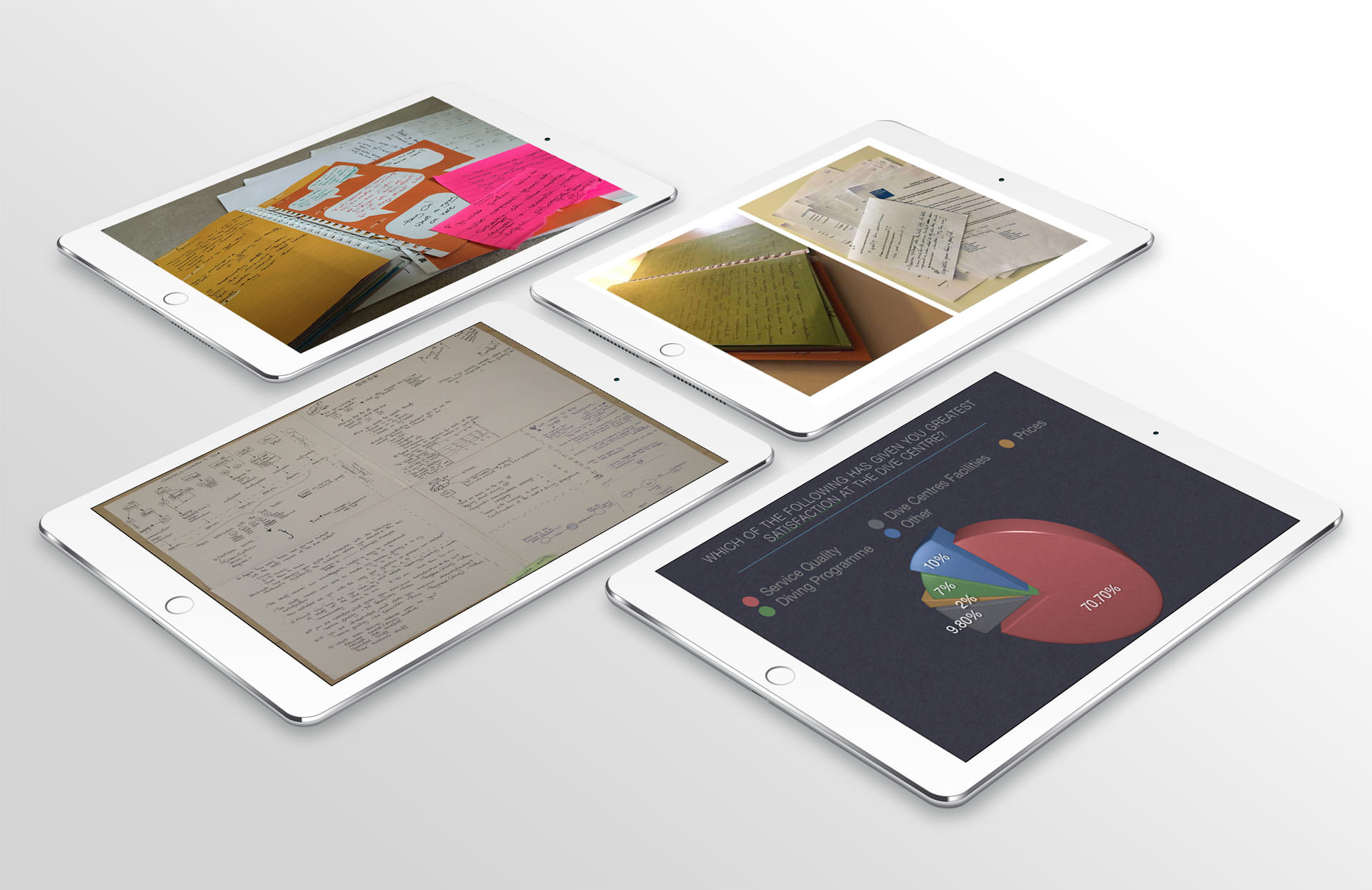
Our initial research phase revealed several critical findings that shaped the direction of the project and directly informed the creation of the service blueprint and user journey artefacts:
- Staff Kindness and Professionalism:
Users consistently praised the dive centre’s staff for their warmth and professionalism, which fostered a strong sense of safety and community. - Digital Experience Gaps:
Despite positive in-person experiences, the digital platform did not reflect the same level of care. Users encountered inconsistencies in content, navigation, and visual design across different language versions, making it difficult to find essential information or contact the centre. - Diverse User Needs:
Interviews and surveys highlighted a heterogeneous client base, each with unique expectations and preferred ways of interacting with the centre—both online and offline. - Service Blueprint and User Journey Mapping:
Drawing on the insights from 60 user interviews, stakeholder feedback, and survey data, I developed detailed service blueprints and user journey maps. These visual artefacts captured the full customer experience, identified pain points, and highlighted opportunities for improvement across all touchpoints - Foundation for Design:
The blueprint and journey maps became key reference points for the design process, ensuring that the new platform addressed real user needs and delivered a seamless, welcoming experience.
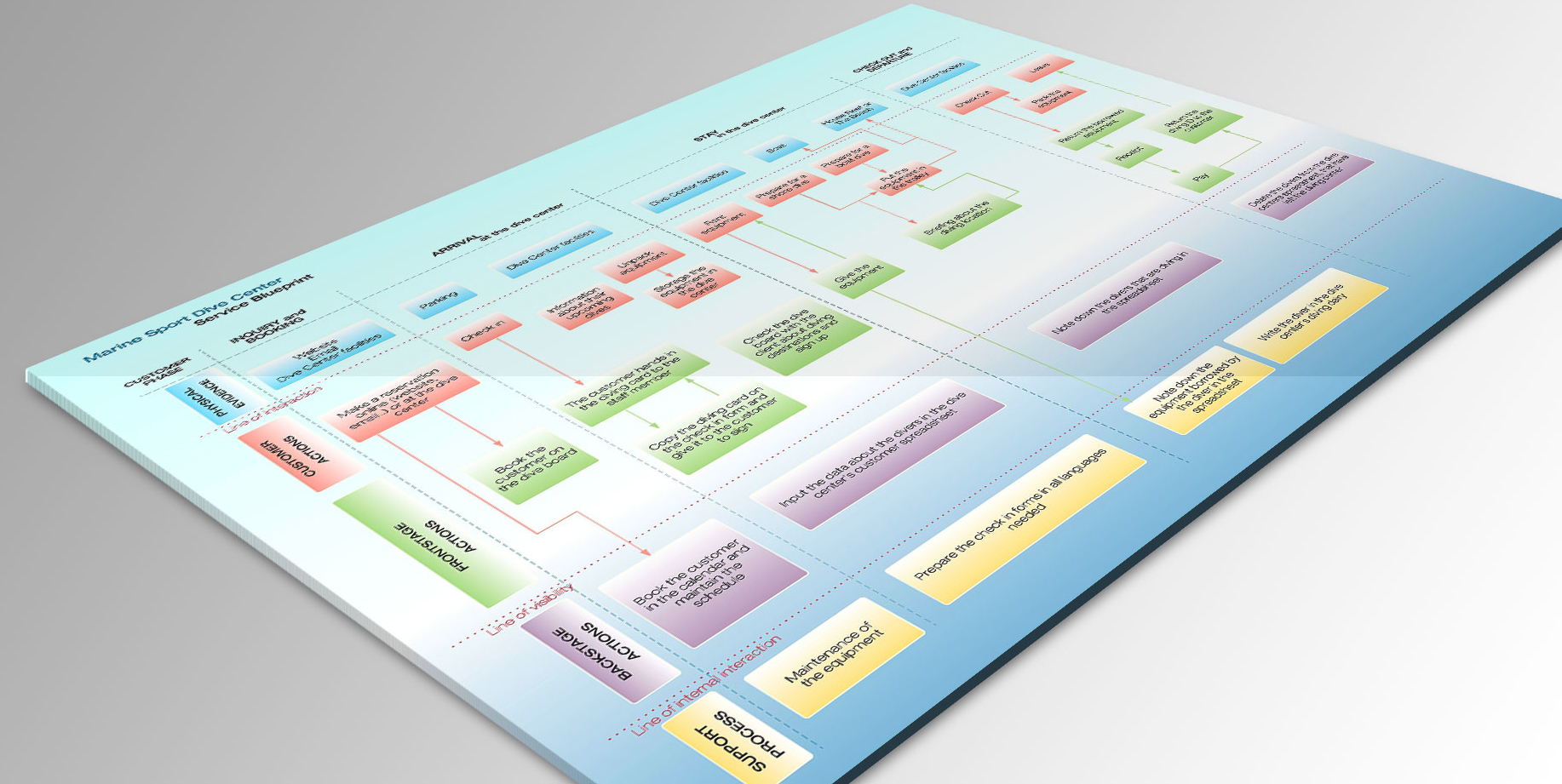
Part II: Digital Platform Audit
Building on the foundation of user and stakeholder insights, I conducted a thorough audit of the digital platform:
Heuristic Evaluation
- I systematically reviewed the website using established usability guidelines. This revealed inconsistencies in information architecture and navigation, mismatched link names and calls-to-action, outdated visuals, and a lack of trust-building elements.
Content and Visual Review
- Each language version of the site had developed its own structure and style over time, resulting in a fragmented experience. Some pages contained typographical errors, outdated images, and inactive contact sections, while others lacked clear information about services
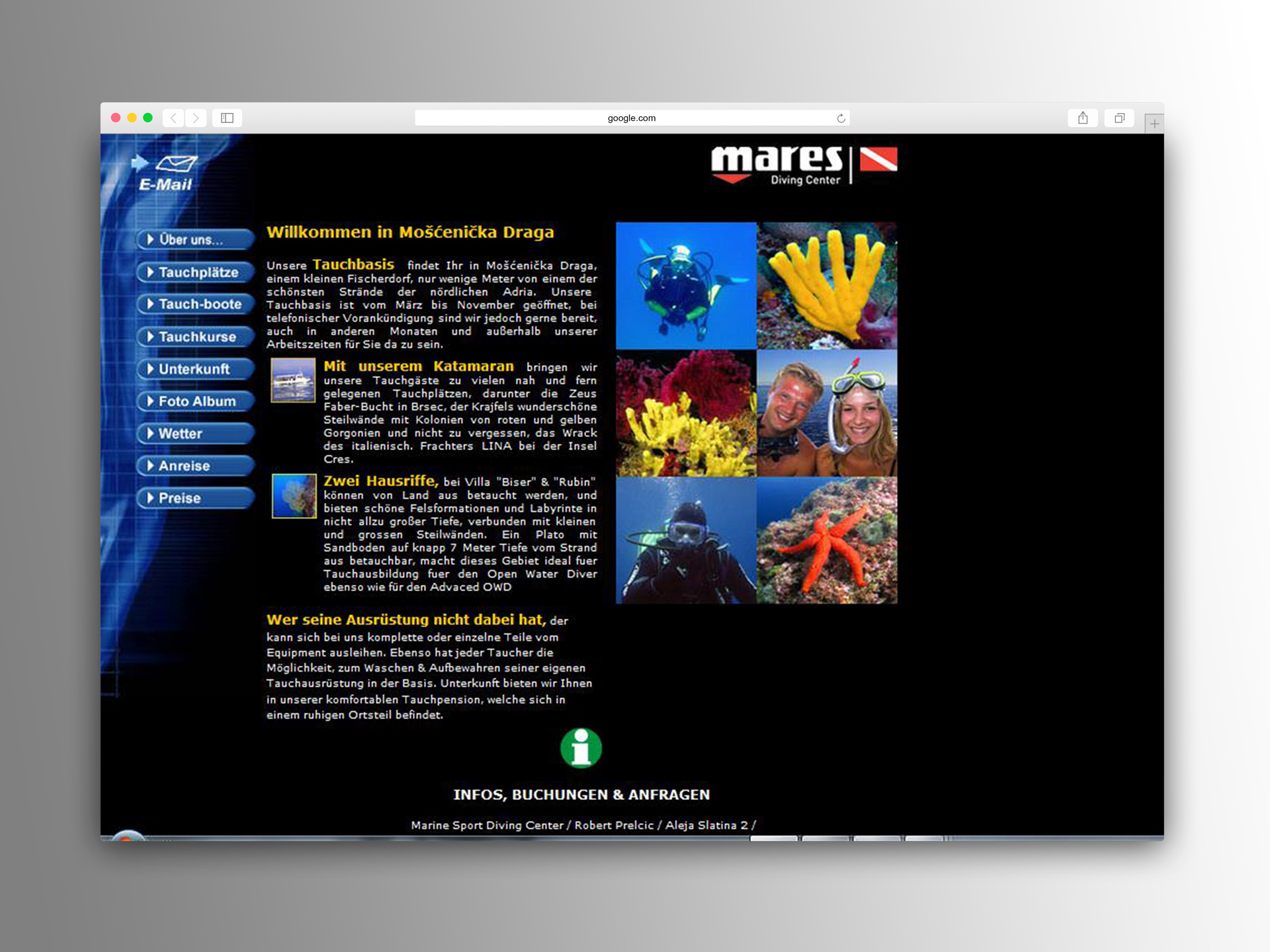
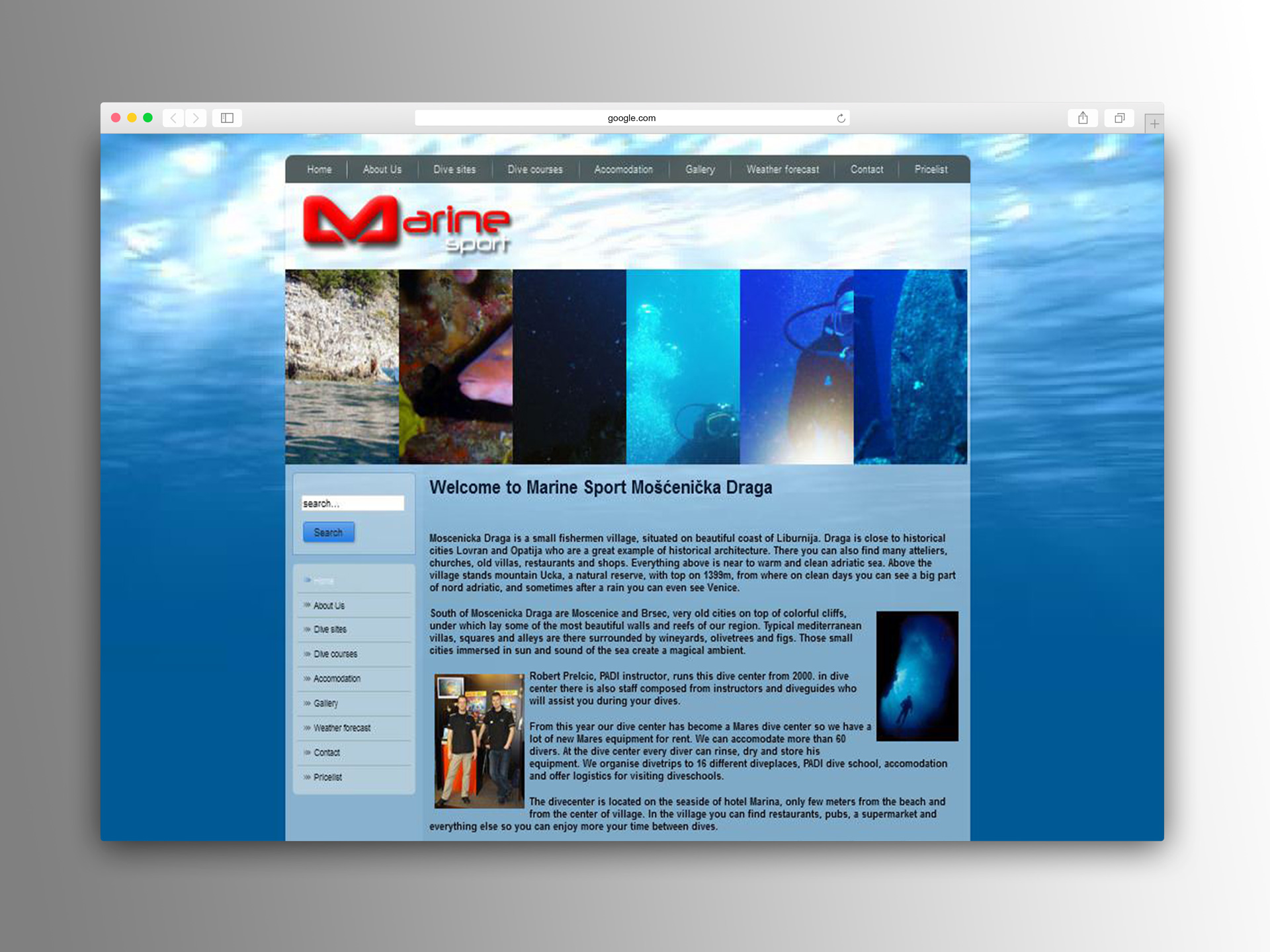
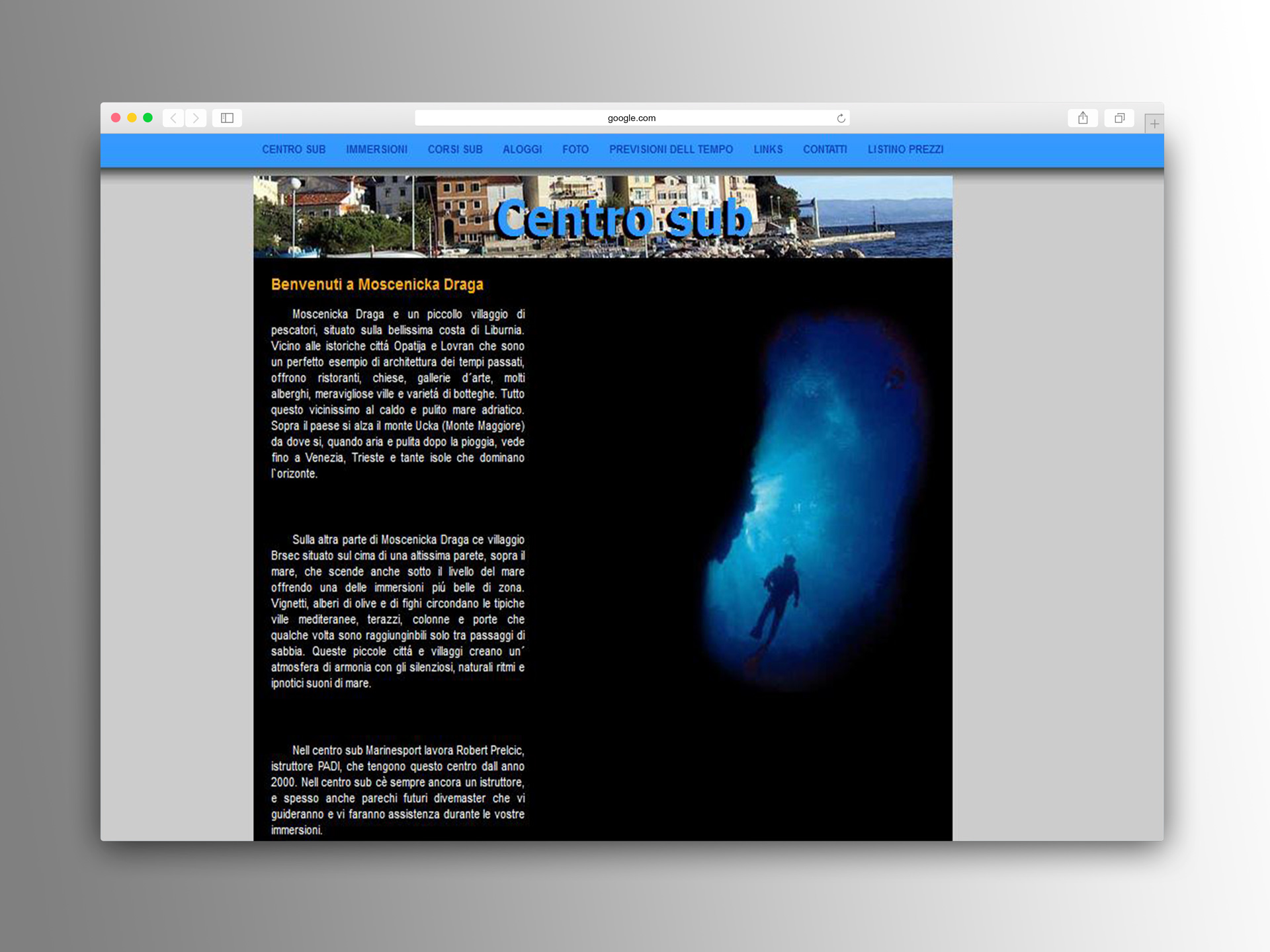
To highlight these issues, I included screenshots from the German, Italian, and English sites, clearly showing the differences in layout and design across languages. These visuals made the need for a unified, modern platform immediately clear to everyone involved
Conclusion
The website needed a unified approach to navigation, content, and visual identity to ensure a consistent and welcoming experience for all users, regardless of language or device.
Synthesis & Strategy
I organised and analysed all qualitative data using affinity mapping and qualitative coding. This enabled me to:
- Create user personas representing the centre’s diverse client base
- Develop a service blueprint and user journeys to visualise the customer experience across all touchpoints
- Identify key requirements and prioritise features that would have the greatest impact
Design and Iteration
Low-Fidelity Wireframes
To kick off the redesign, I created low-fidelity wireframes for the key pages, focusing on clear navigation and information hierarchy. These sketches allowed for rapid exploration of layout ideas and were tested directly with users at the dive centre. Their feedback highlighted pain points and areas for improvement, enabling quick iteration before committing to detailed visuals.
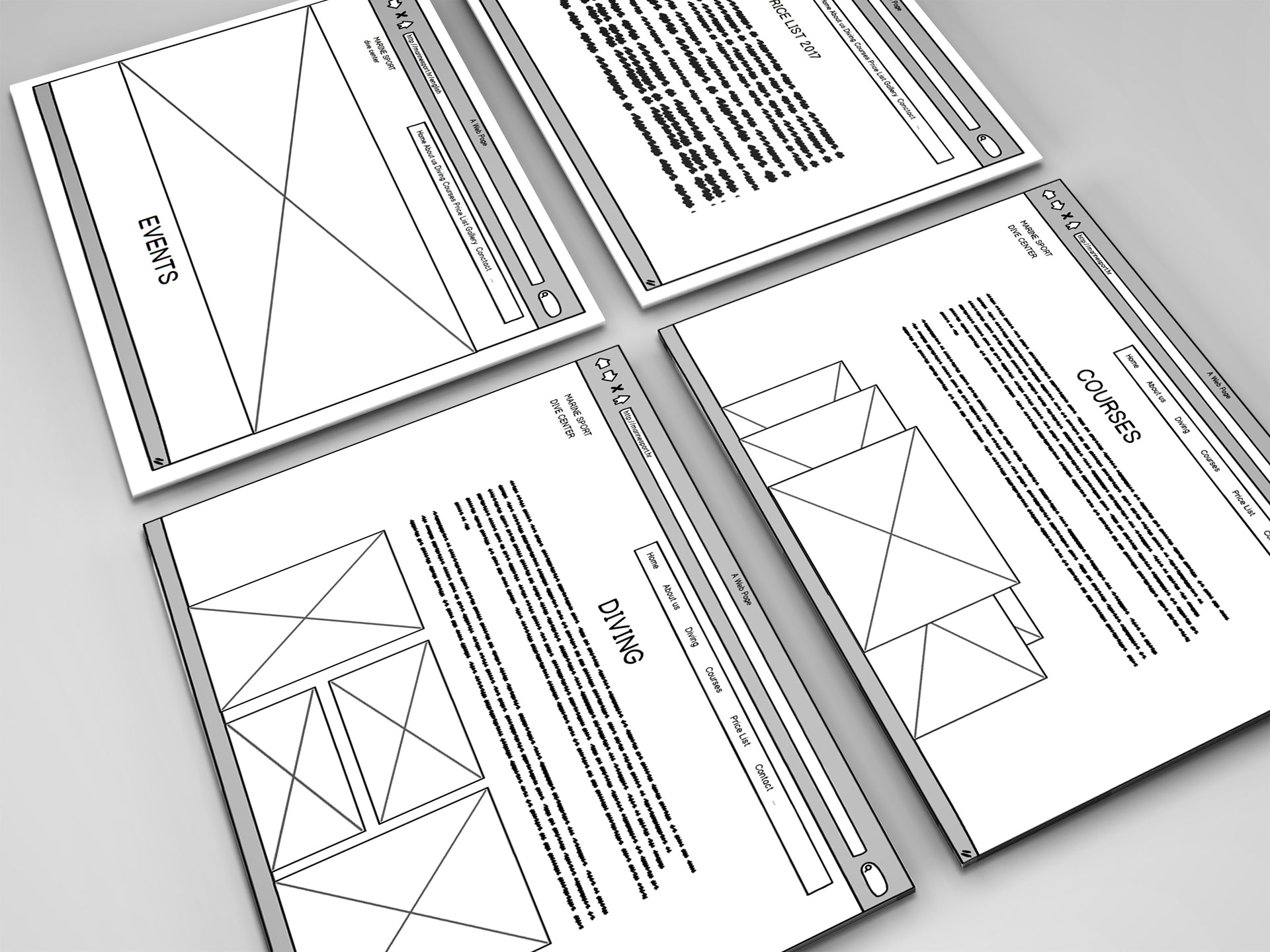
Site Mapping
An initial site map was developed to outline the structure of the new website. This primary version, shown on the left, represented our starting point for organising content and navigation. Through ongoing user feedback and input from the business, we identified areas for improvement—such as simplifying navigation paths and making key information more accessible. After usability testing, the refined site map on the right incorporated these enhancements, resulting in a more intuitive and streamlined user journey across all language versions.
By comparing the two versions side by side, it’s clear how user-centred iteration led to a more effective and user-friendly structure.
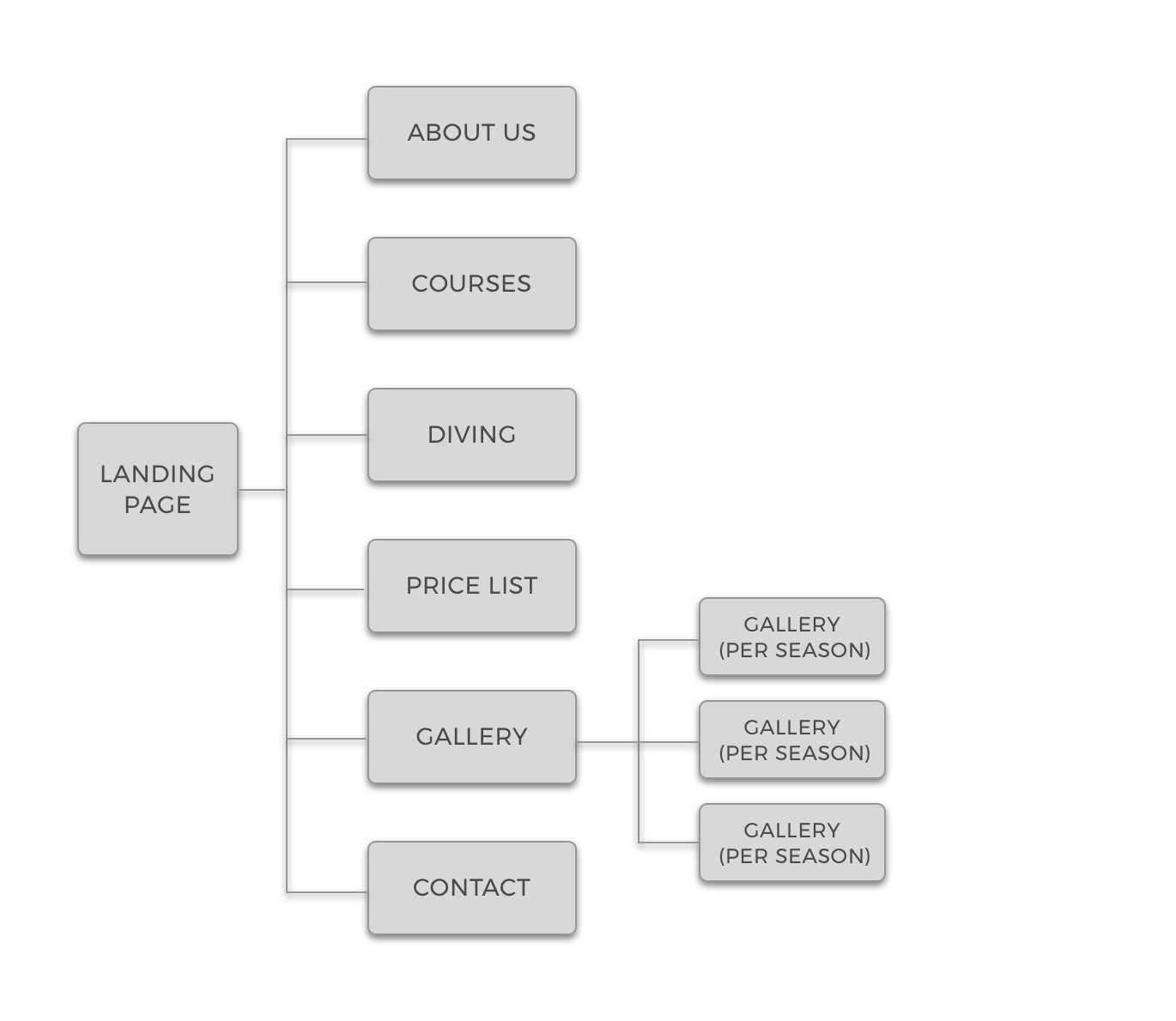
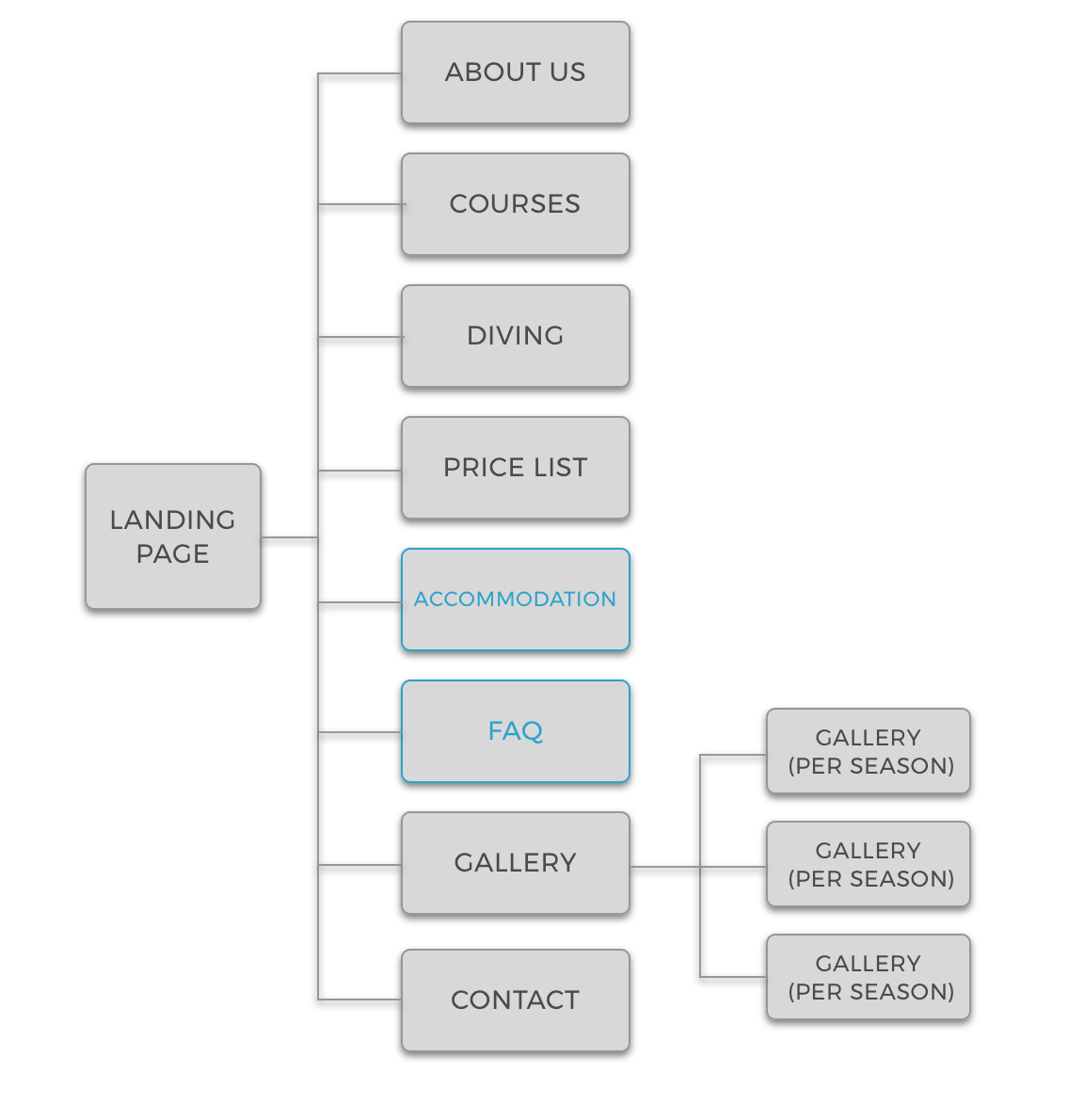
High-Fidelity Design
With user-tested wireframes and a refined site map in place, I moved on to high-fidelity design. This stage involved developing polished page layouts, a comprehensive style guide, and a carefully chosen colour palette and typography. Regular checkpoints with users and stakeholders ensured the evolving design remained aligned with both user expectations and organisational goals.
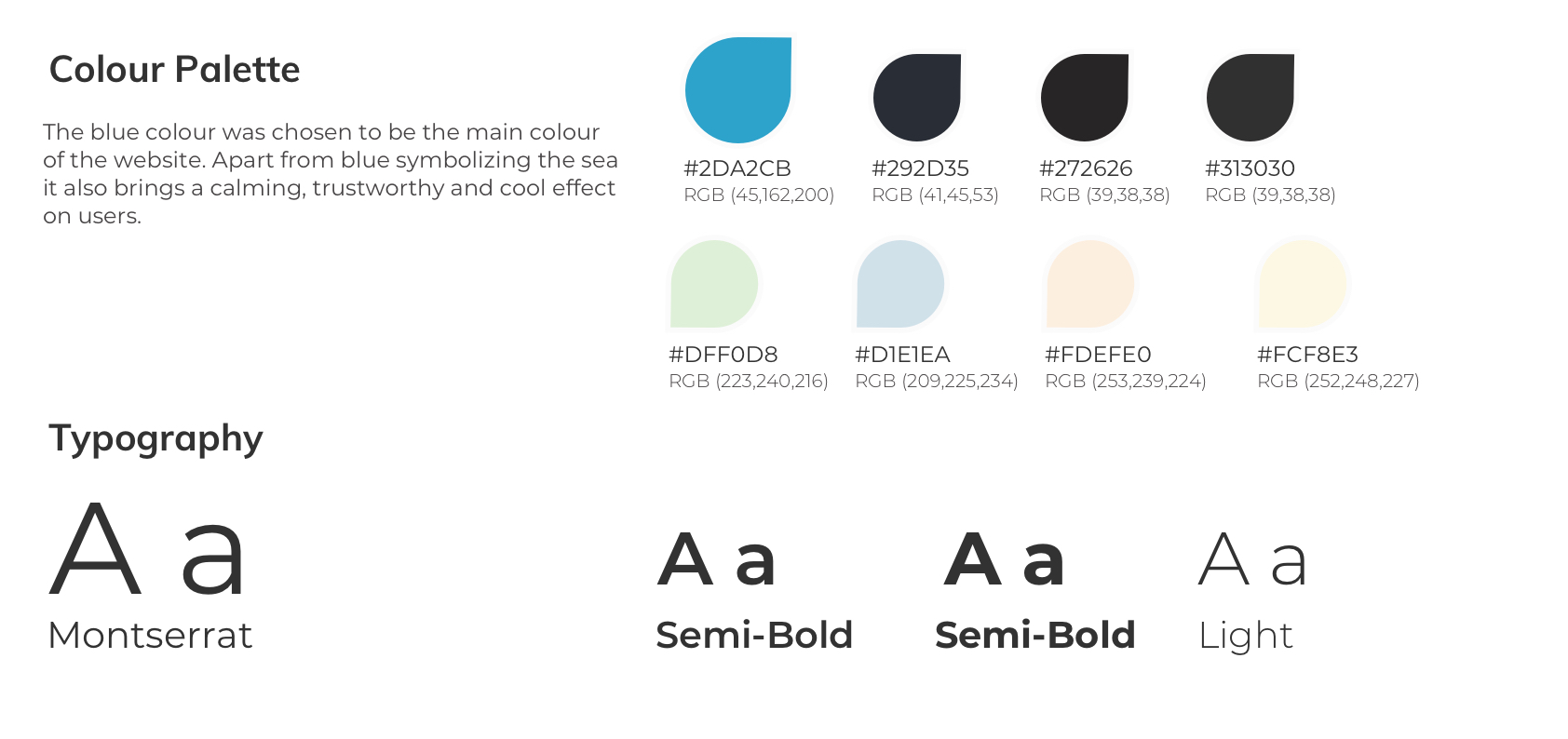
Implementation and Outcome
The result was a fully functional, multi-language website that now serves as a true digital gateway to the dive centre. Key improvements included:
- Unified navigation and consistent information architecture across all language versions
- The dive centre’s own, visually engaging imagery and clear, accessible content
- Prominent, easy-to-use contact channels
- A cohesive visual identity that builds trust and reflects the centre’s professionalism
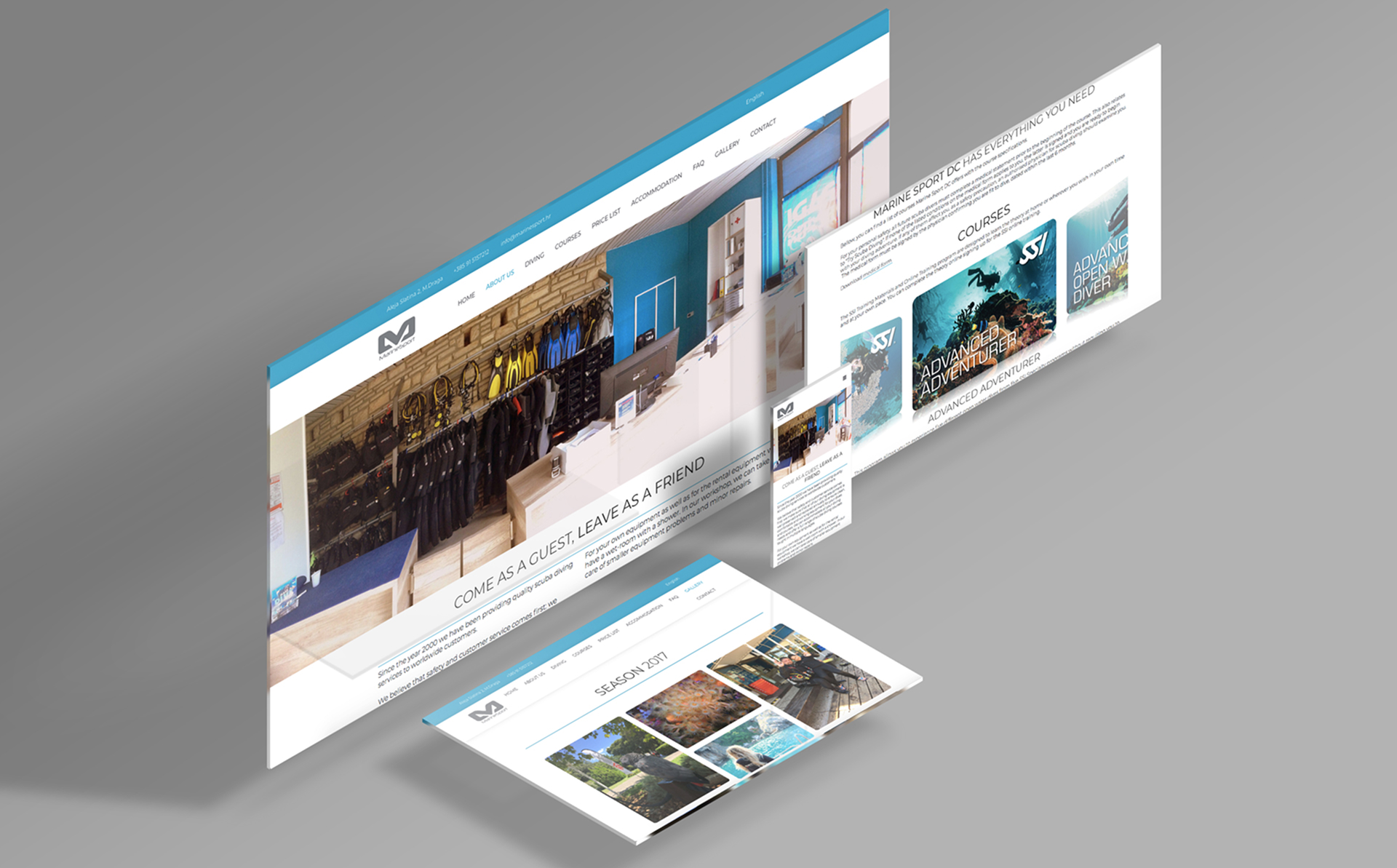
Reflection
Leading the digital transformation of the dive centre’s website was both a challenge and a rewarding experience.
Working closely with stakeholders and users, I was able to deliver a platform that not only meets modern standards but also genuinely reflects the welcoming spirit and professionalism of the centre. The process reinforced the importance of thorough r esearch, iterative design, and clear documentation.
I’m proud that the new website continues to support the centre’s community and helps divers connect more easily, no matter where they are in the world.
